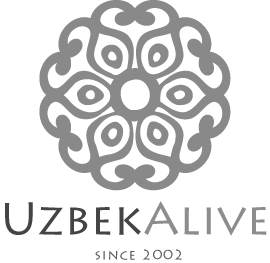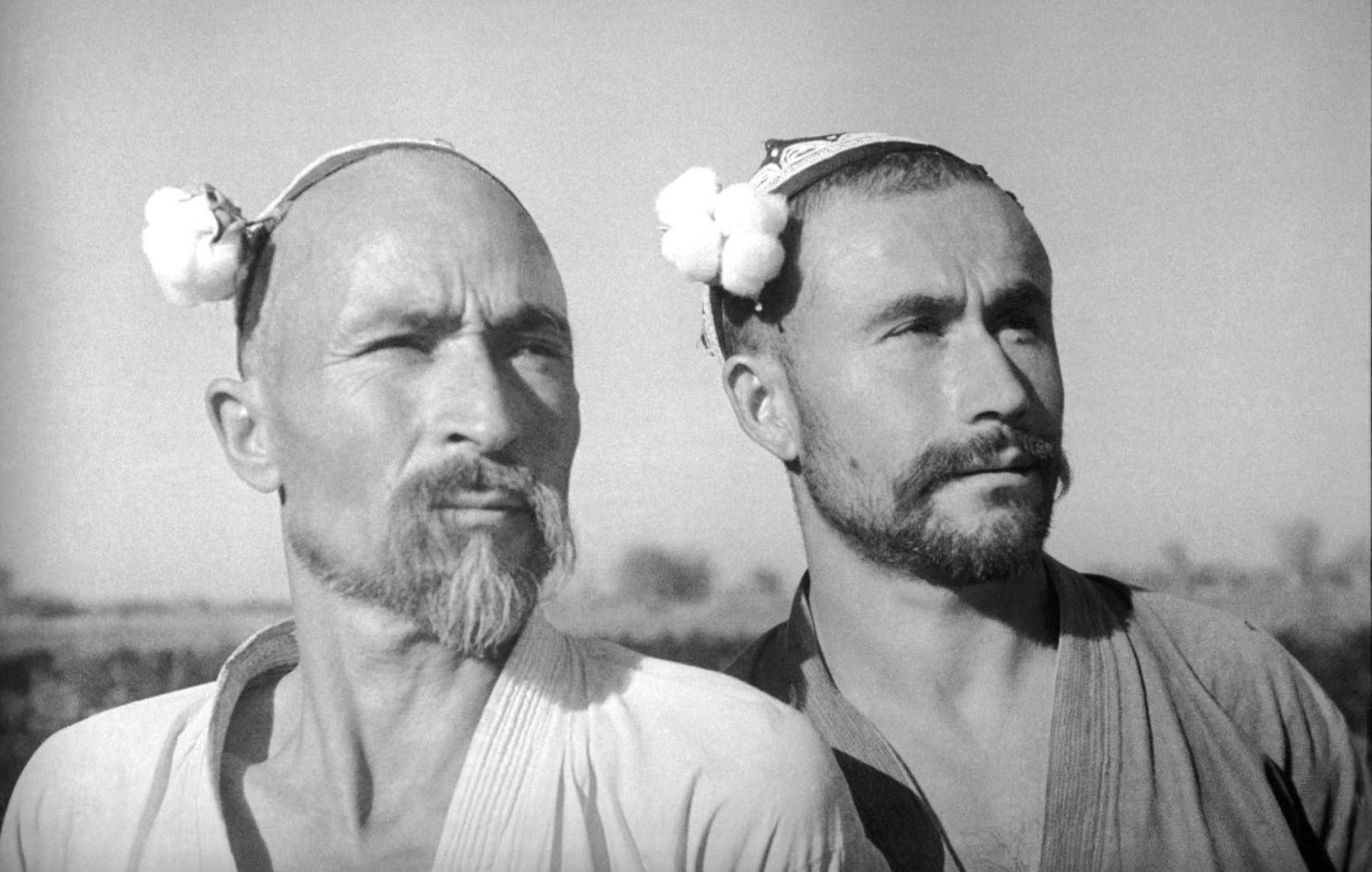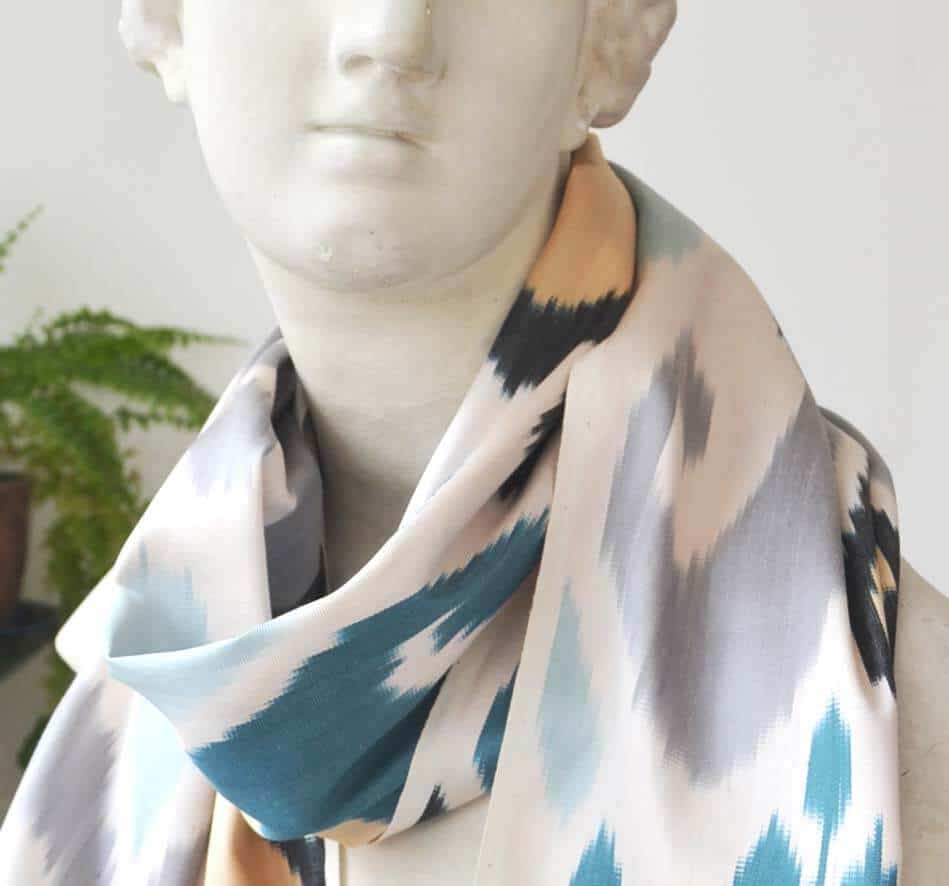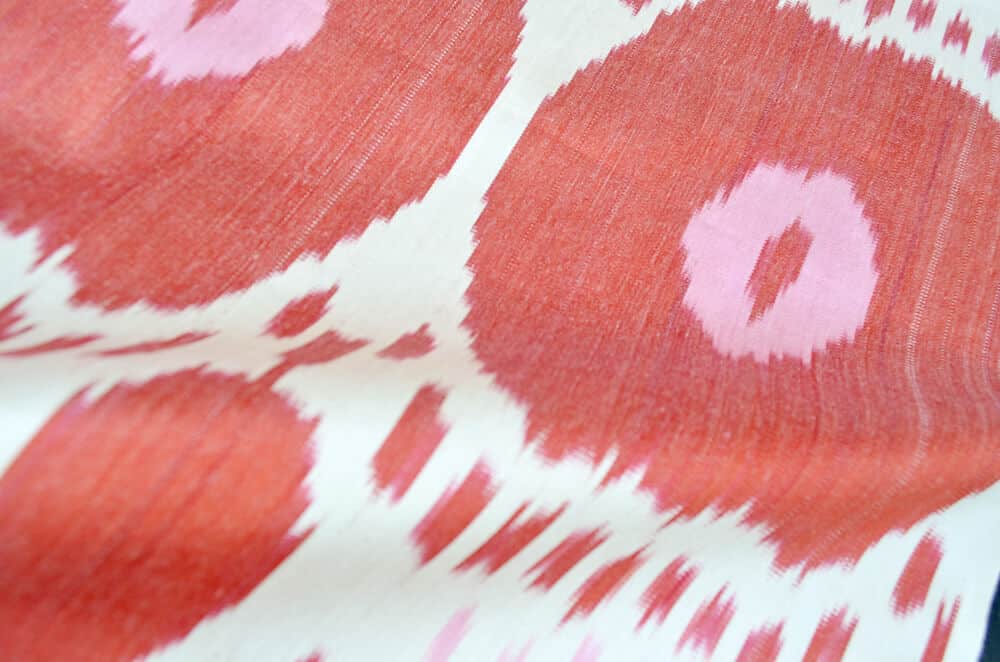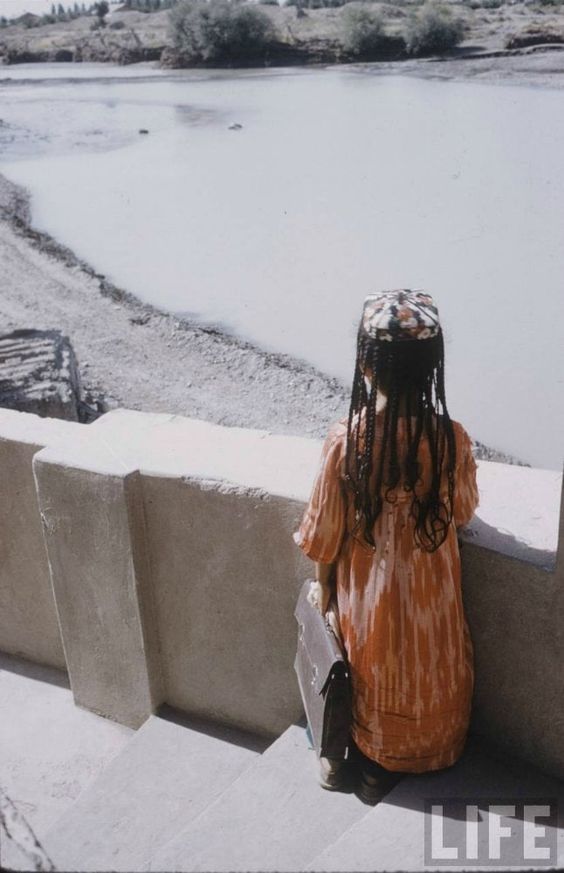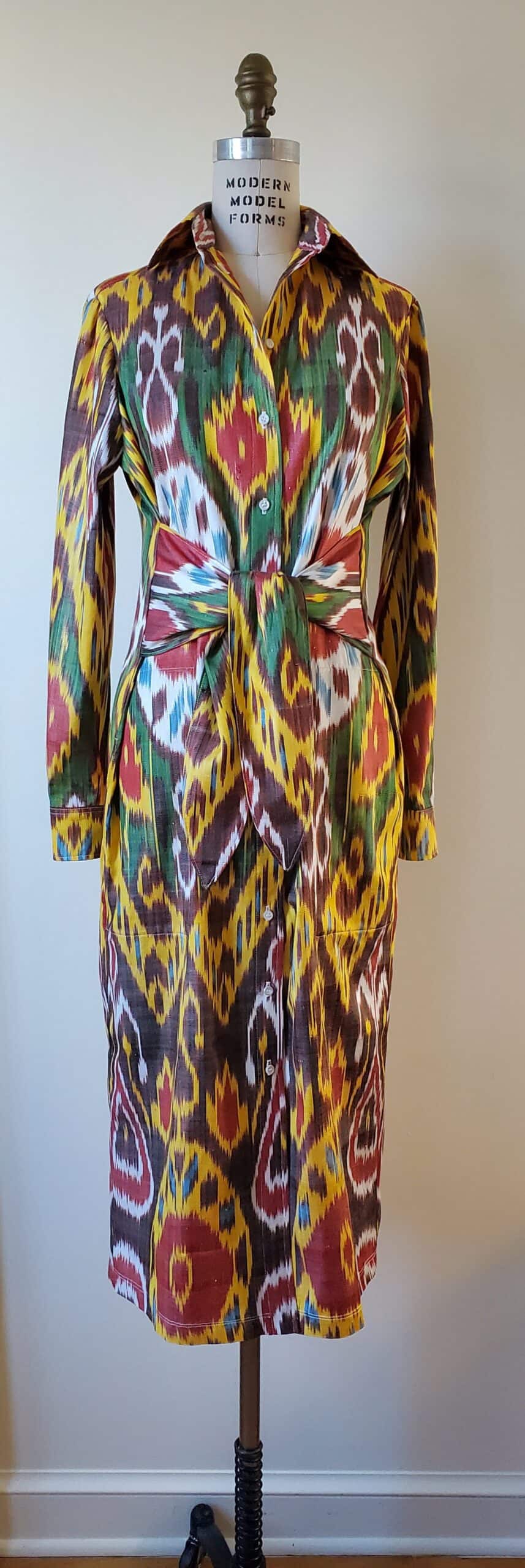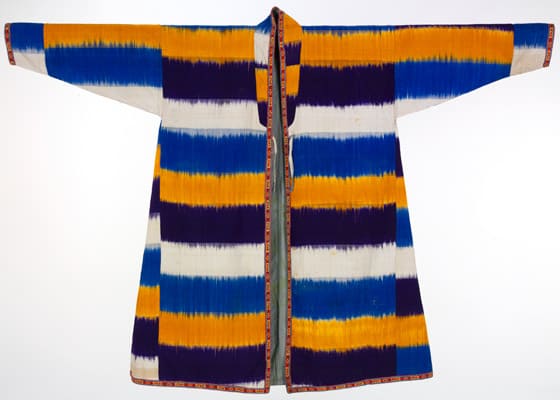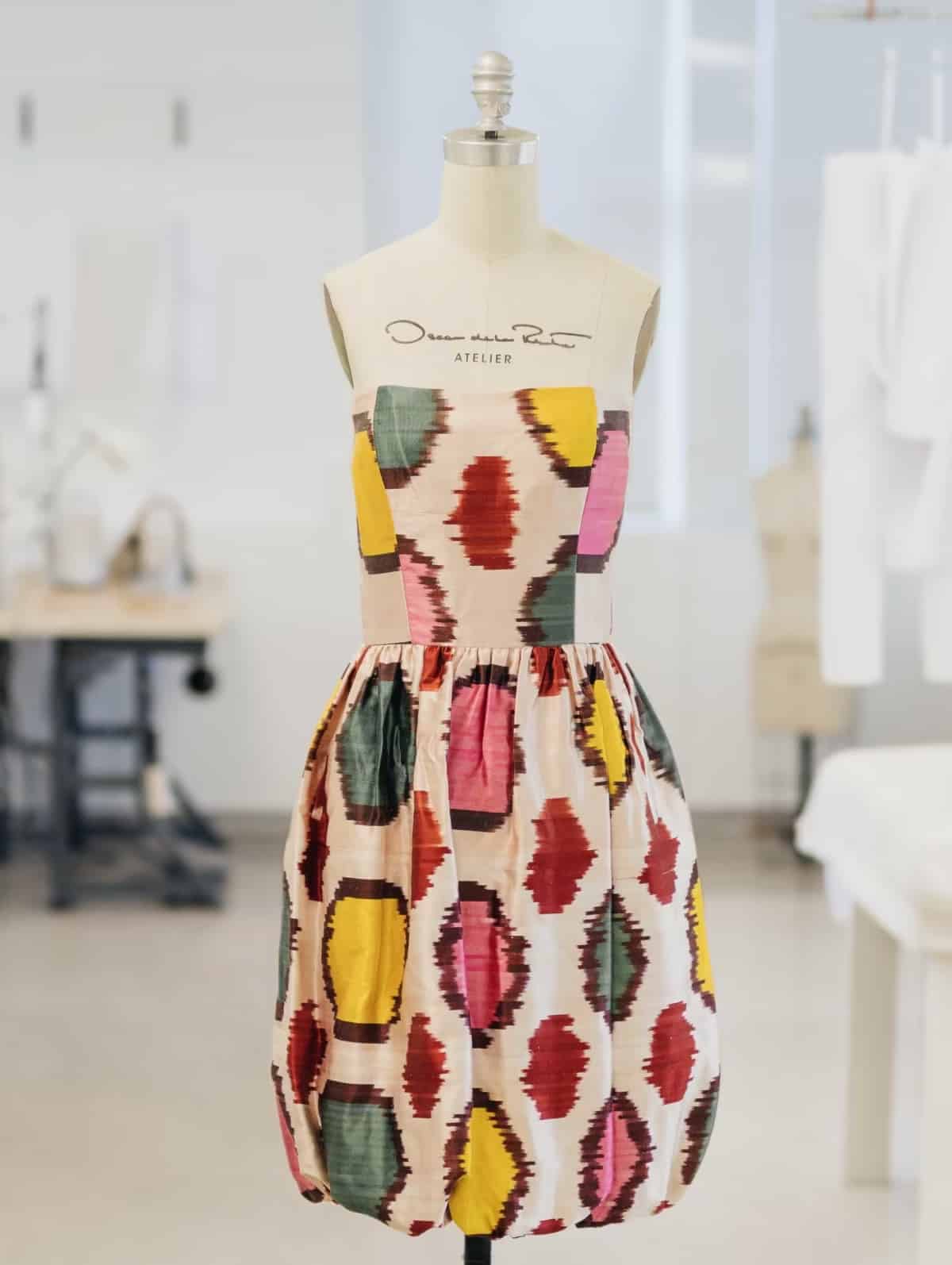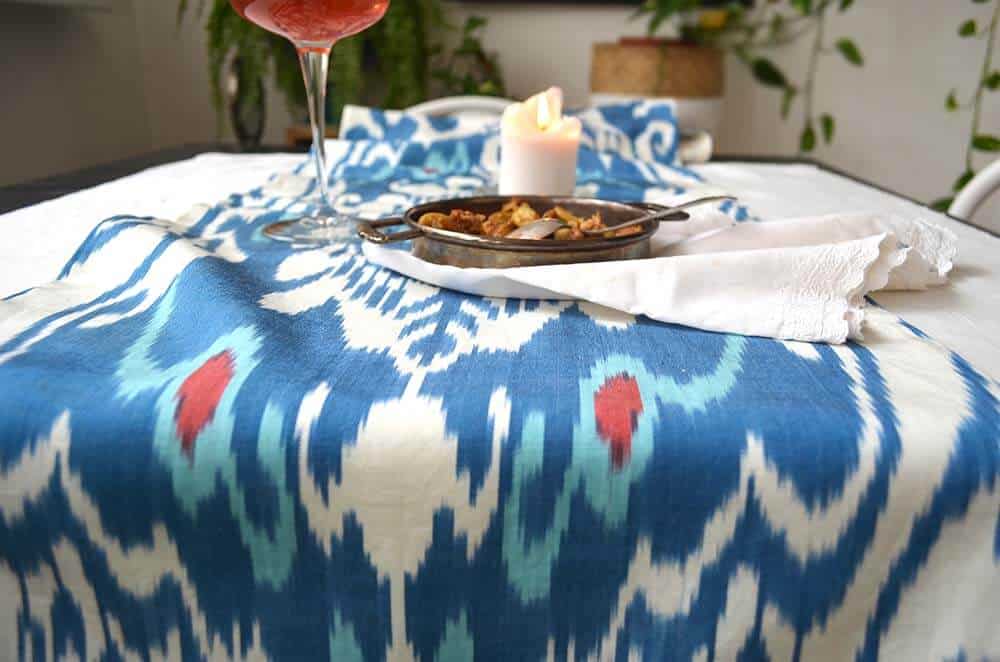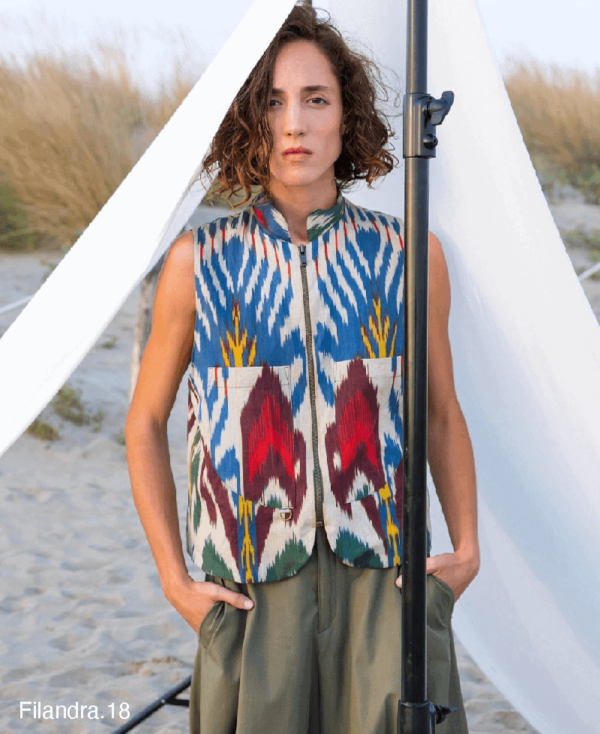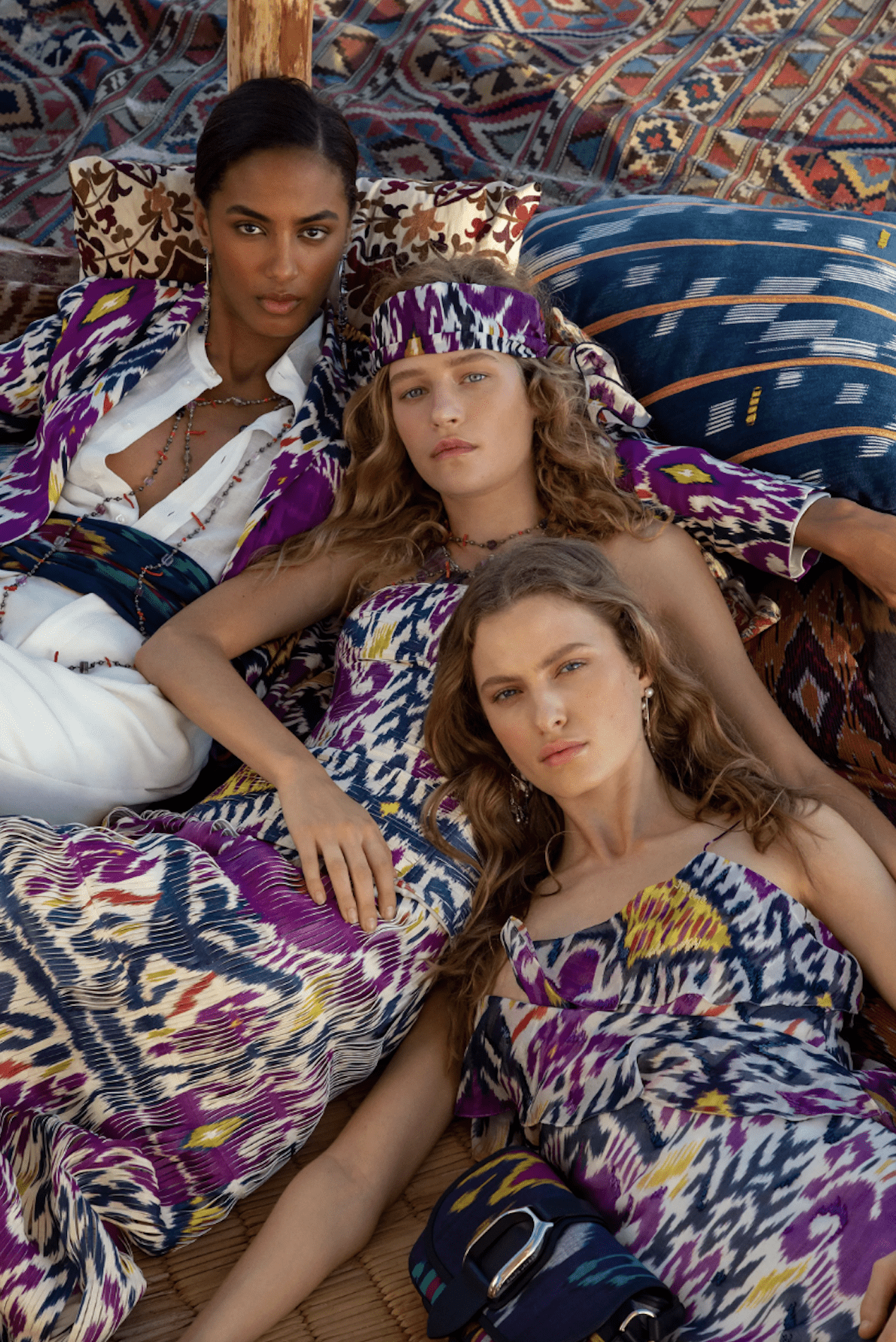Ikat fabrics and “white gold” of Uzbekistan
Our ikat fabrics, renowned for their vibrant patterns and texture, are usually comprised of approximately 50% cotton and 50% silk, blending traditional craftsmanship with local agriculture. This article delves into the history of cotton production in Turkestan, presently known as Uzbekistan, where cotton cultivation has been a cornerstone of the region's economy and culture for centuries.
Brief Historical Note on Uzbekistan's "White Gold"
Cotton, often referred to as "white gold," has long been a strategically significant crop. Its cultivation began in 19th-century Turkestan. Interestingly, the region’s evolution into a major cotton producer is a direct effect of the abolition of slavery in the United States. With the disruption of American cotton supplies, which were crucial to the Russian economy and military, Tsarist Russia turned its attention to Turkestan.
Among all its colonized territories, Turkestan had the ideal climate for cotton cultivation. Initially, local farmers grew cotton for export which was very minimal and the population's use.
Originally cultivated to meet the demands of the Russian Empire’s population and military, cotton, over the years, has since become a vital part of the economy. It plays a key role in providing affordable clothing and supporting military efforts. Over time, the narrative of cotton has become one of pride, enrichment, power, and military strength, but it has also brought serious ecological issues to the region.
5 Things You Should Know Before Buying Ikat Fabric
Ikat fabrics have become the latest buzz in the world of fashion and home decor, catching the eyes of those who crave a blend of tradition and style. However, diving into the ikat trend and buying ikat fabrics without a proper understanding of what you're getting into can lead to surprises. This article serves as your friendly "ikat fabric buyer beware," aiming to arm you with essential insights before you invest in these textiles. Please note that everything we cover in this post applies to ikat fabrics made in Uzbekistan. So, let's unravel the ikat mystery together.
1. Ikat Fabrics and their Narrowness
One of the characteristics of ikat fabrics from Uzbekistan is their distinctive width. These textiles typically measure between 40-50 cm (approximately 16-20 inches for our imperial friends). This specific range of width is not a random choice. It is a direct reflection of the limitations imposed by the traditional handlooms on which these fabrics are meticulously woven. We have a blog post specially dedicated to this aspect of Uzbek ikat fabrics. Due to these constraints, for projects requiring more expansive pieces of fabric, you'll find it necessary to join together multiple strips of ikat, ensuring the ikat patterns align seamlessly.
How much of ikat fabric will I need for a dress?
How much of ikat fabric will I need for a dress? This was a question posed by Roberta, one of our Italian customers. This post is our answer to Roberta, along with the reasoning behind it, so you can adapt the calculation for your own needs.
Buying handmade ikat fabrics can be thrilling, but figuring out how much you'll need for a dress can be tricky. This is especially true because Uzbek ikat fabrics are typically narrow in width and require careful ikat pattern matching. Width of Uzbek ikat fabrics, depending on a pattern, can vary from 35cm to around 50cm (13.7" to 19.6"). We specify this measurement in each product description.
1958 school girl | ikat dress and memories
We love this photo! It is from “Life” magazine archives and was taken in Tadjikistan in 1958 by an American photographer Howard Sochurek during his travels in the former USSR.
As a woman born and raised in Soviet Central Asia, this photo resonates deeply with me. It evokes a rush of nostalgia and fills my heart with warmth. It beautifully captures the essence of that era, speaking volumes about a social landscape of those times.
In 1958, the girl in this photo resembles how our mothers appeared when they attended Soviet schools: dressed in ikat dresses, hair traditionally braided in many braids, and carrying school bags far too large for their height and age. There was a clear determination to study!
Crafting Chic: How Chicago-based Fashion Designer Used Uzbek Ikat Fabric
Using Uzbek ikat fabrics in fashion has been in a trend in many decades. These unique handmade fabrics intertwine rich historical traditions, artisanal craftsmanship and timeless elegance. An excellent example of its versatility can be seen in the below post, where we talk of a fashion designer Kyle Pearson and how skillfully she used our ikat fabric for making fabulous garments, pairing opulence, cultural wealth and a contemporary style.
The Unique Appeal of Uzbekistan Ikat Fabrics
One of the most captivating aspects of Uzbekistan ikat fabrics is the way they are created. Handmade with patience and precision, these fabrics are known for their narrow width, a characteristic determined by the width of traditional wooden handlooms. While this might seem like a limitation, it's actually the thing that makes these fabrics so unique, especially in today’s world of mass production.
How 19th-Century Ikat Pattern Wove its Way Back into 21st-Century ikat scarf
In the world of fashion, we have seen the significant impact of wars, famines, and diseases. A similar fate befell on Uzbek ikat patterns and ikat weaving traditions. The Soviet State had a huge impact on Central Asia’s rich textile heritage.
Best Use of Uzbek Ikat Fabric
Uzbek ikat use varies depending on one's interests. We have customers who make them for tailoring dresses or for decorating homes. Before we dive into how Uzbek fabric uses let's start with a definition of Uzbek ikat.
Uzbek ikat fabric is an artisanal textile that is hand dyed and woven on traditional handlooms using a resist-dyeing method. This method of making the fabric is traditional to many regions of Uzbekistan with Margilan being the cradle of ikat fabric production of not only Uzbekistan but the entire Central Asia. The resulting ikat design patterns and colors are bold and unique to Uzbekistan, making them a popular choice of unique textile among fashion designers and home decorators.
It is important to note that In December 2017 the traditional methods of manufacturing Uzbek ikat fabrics were included in the UNESCO Register of Good Safeguarding practices. What does this mean? It means that the art of ikat making survived within families overcoming repressions and bans on artisanal ikat making during the Soviet era. The ikat making in Uzbekistan was safeguarded by a small community of descendants of ikat artisans over the generations until the Soviet Union collapsed and it became legal to manufacture ikats in a traditional way. We have a great post talking just about that here.
We prepared several areas where Uzbek ikat fabrics are widely used:
Hand Washable Uzbek Ikat Table Runners
Textiles add a beautiful, festive, and comforting touch to interiors and this is exactly what we had in mind when we decided to introduce hand washable ikat table runners to our collection. Textiles make our lives cozy. On top of that, Uzbek ikat fabrics have festive, almost royal looks because of their rich colors and bold ikat patterns. These are two visual characteristics that differentiate Uzbek ikats from other ethnic artisanal fabrics. Fergana Valley of Uzbekistan is an origin of these fabulous ikat fabrics where to this day they are hand dyed and handloom woven.
Where did inspiration for ikat table runners come from?
COVID-19 lockdown inspired us to introduce ikat table runners to our collection. Sharing meals with our loved became especially meaningful during the COVID isolation and we wanted the dining experience to be extra special. As a rule, table runners are designed to protect tables from spills and the dropping of food. They also have an esthetic function of decorating and creating that chic look. However, a chic appearance should not result in a extra cleaning expenses.
5 Fashion Designers To Follow Who Use Uzbek Ikat Fabrics
Many people nowadays use the Instagram because of its immense popularity for sharing visual content. If you enjoy the world of fashion and textiles, following these fashion designers who use Uzbek ikat fabrics can be both entertaining and inspirational for you.
Ikat has seen a rapid rise in popularity over the last several years, and its comeback has generated a lot of buzz on Instagram. Several Instagram accounts have managed to captivate audiences who are interested in Ikat. So if you find yourself getting lost on your Instagram feed daily in search of gorgeous Ikat patterns, we have made your job easier. We have compiled a list of the top 5 Instagram accounts of fashion designers whose Instagram accounts are worth keeping tabs on.
Ikat patterns in Ralph Lauren 2022 Resort collection
Ralph Lauren, one of the most well-known names in the American fashion industry, released the spring-summer collection 2022 in Dubai. This season's collection features ikat patterns inspired by motifs that are traditional to Uzbekistan, Tajikistan, and other cultures around Central Asia.
Ethnic designs and textiles such as ikat have always served as a source of inspiration for famous couturiers, fashion houses, designers, and artists. Oscar de la Renta and Gucci drew inspiration from the long and rich legacy of beautiful Uzbek ikat textiles and showed them on their fashion runways. Now, Ralph Lauren is the latest designer to incorporate Uzbek ikat designs into his spring collection.
